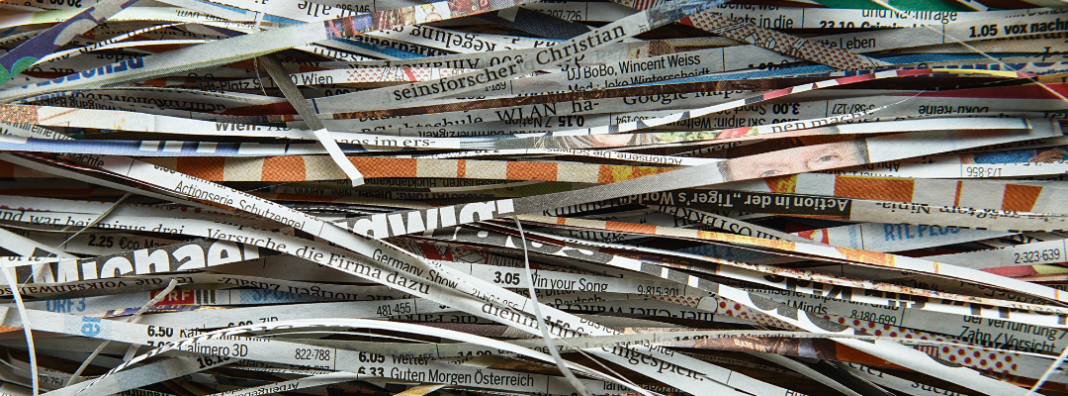
When I began school at the University of Illinois over a decade ago, I had the vague notion that I wanted to be a journalist. It was hardly a secret that print journalism was contracting back then. To survive in this new world, I was told, writing wouldn’t be enough. I would also need to edit, photograph, and produce content.
Today, the Senate is considering a bill to help journalism survive by forcing the largest tech platforms like Meta and Google into payment deals. The Journalism Competition and Preservation Act (JCPA) would create an antitrust exemption for news media, allowing designated groups to form joint negotiation entities and demand payment from digital platforms for links and previews of their material.
While I didn’t go into journalism, I have been watching it closely and studying it ever since. The following are five lessons that should inform the discussion about JCPA’s passage.
Newspapers were once “extremely profitable”
For decades, newspapers faced little competition. Even until the early 2000s, newspapers posted double-digit returns and maintained an “extremely profitable, quasi-monopoly status,” in the words of one Congressional Research Service report.
At one time, newspapers were flush, as John Podhoretz explained,
So flush that the first week I was there, the World section had a farewell lunch for a writer who was being sent to Paris to serve as bureau chief…at Lutece, the most expensive restaurant in Manhattan, for 50 people. So flush that if you stayed past 8, you could take a limousine home…and take it anywhere, including to the Hamptons if you had weekend plans there. So flush that if a writer who lived, say, in suburban Connecticut, stayed late writing his article that week, he could stay in town at a hotel of his choice. So flush that, when I turned in an expense account covering my first month with a $32 charge on it for two books I’d bought for research purposes, my boss closed her office door and told me never to submit a report asking for less than $300 back, because it would make everybody else look bad.
Because there was no other game in town, newspapers were cash cows. The cash flow margin for newspapers, one indicator of financial health, reached its high in the late 1990s at 29%. To put that in perspective, both Meta and Apple have cash flow margins that are hovering around 30% today, while the newspaper conglomerate Gannett has a cash flow margin of 3% in the best of times.
Beginning in the early 2000s, the newspaper industry began to change as high-speed Internet unbundled the newspaper through competition.
The Internet unbundled content, and in doing so, saved consumers billions of dollars
Not that long ago, buying a newspaper meant getting access to a bundle of content you couldn’t find elsewhere. News, sports, entertainment, weather, automotive listings, real estate, and travel content were all packaged together and sold as a weekly or daily newspaper. A combination of advertising and subscriptions supported all of this content.
Competition brought on by the web fractured the bundle. Sports, entertainment, weather, automotive, real estate, and travel sites came into their own with ESPN.com, Cars.com, Apartments.com, and countless others.
Meanwhile, eBay and Craigslist offered an alternative to classifieds just as search and social media sites opened up alternatives for local retail and national chains. One study estimated that Craigslist’s entry resulted in $5.4 billion in savings during 2000–2007 as the price of line ads effectively went to zero.
After the deluge of the Internet, what was left was arguably the most prestigious and most costly, but the least sought-after content, hard news. With all of the other content stripped away, newspapers no longer had as tight a grip on advertisers. Using data from a large regional newspaper, Pattabhiramaiah, Sriram, and Sridhar (2017) found that there was a sizeable increase in subscription prices from 2006 to 2011, which was best explained by the decline in “the ability of the newspaper to subsidize readers by extracting surplus from advertisers.”
Unbundling content meant the erosion of the monopoly power of the newspapers over advertisers. At its core, this is what the JCPA is trying to change.
US newspapers have suffered more than European newspapers
Newspapers in the United States have been uniquely affected by the shift toward digital publishing because they are uniquely exposed to changes in advertising revenue.
While the data is old, the trend outlined by Pew back in 2011 still reflects a broad truism. Across the globe, advertising typically makes up a little over half of newspaper revenues, while circulation constitutes around 40 percent. In the US, by contrast, newspapers often generate 70–80 percent of their revenue from advertising and the rest from subscriptions and circulation.
In an earlier era, this made a lot of sense because newspaper companies could keep the paper price low, expand readership, and then sell ads to local retailers. But when advertising shifts, newspapers are exposed to significant losses, much as the big platforms are exposed to similar changes now.
The rise of Big Box stores like WalMart and Target also play a big part in this story. Two decades ago, local retail advertising generated almost half of all newspaper revenue. But this changed because local retailers and Big Box stores have different strategies. Big Box stores tend to focus on low-price guarantees and use TV to get this message out. Meanwhile, local retailers tend to focus on sales and promotions through print advertising. As Big Box retailers took over, ad money shifted toward TV.
Newspapers still make a lot of money
The newspaper industry still generates a lot of revenue for the number of readers.
Pew’s most recent review of local newspapers reveals just how much money is being made by locally focused newspapers. The combined advertising and circulation revenue of local US daily newspapers in 2020 was $2.17 billion. This revenue was spread across 8.3 million weekday readers and 15.4 million Sunday readers.
Assuming some that 85 percent of the revenue comes from weekday readers while the other 15 percent comes from Sunday readers, the average revenue per reader for the industry is $233. For some comparison, Meta’s average revenue per user is just over $193.
The JCPA would thus be a transfer towards an industry with already high revenues per reader.
Research finds that the impact of aggregators on news outlets is ambiguous
While it is assumed that news aggregators like Google and Facebook are locked in competition with news outlets, the effect in reality is ambiguous. Aggregators may expand the market by bringing new visitors to news outlets, but they could also generate a substitution effect if visitors then switch to the aggregators instead.
To understand how these two forces play out, economists Joan Calzada and Ricard Gil (2016) studied the shutdown of the Spanish edition of Google News in December 2014 and a policy change affecting the German edition of Google News in October 2014. In Spain, the shutdown lowered the number of daily visits to local news sites between 8% and 14%, while in Germany, daily visits to local news sites dropped by 8%. On the other hand, they found “no evidence of a substitution effect in our two empirical settings.”
As the authors explain in their paper, the result confirms “the existence of a net market expansion effect through which news aggregators increase consumers’ awareness of news outlets’ contents, thereby increasing their number of visits.”
What should Congress do?
In making a case for the change, Senators Klobuchar, Kennedy, Cicilline, Buck, Durbin, and Nadler have all lauded the benefits, claiming that JCPA will “address dominant online platforms’ power over news organizations.” But that is misdirection because platforms cultivate attention for newspapers.
More fundamentally, the bill misreads the room. The structure of the market has changed. Newspapers no longer have their prized position in the ecosystem, though they are important players. They can still make a lot of money, like the New York Times has in recent years, even though many outlets have shut their doors because of the cost of running a print. New voices, new entertainment, and new outlets are vying for consumers.
In the end, the JCPA would act as a transfer, much like a tax, and shift revenues from the platforms to the newspapers. But the transfer doesn’t make much sense especially when platforms drive more traffic toward newspaper sites.
If policymakers want to truly enact the logic behind the JCPA, they should be taxing everyone that makes content. Consumers have the real power over news organizations. So if leaders want to address dominant power they will need to include all of the other players in the market that are making content that people demand. So, a bill that would implement the real intent of the law would open up negotiations with Craigslist, Ebay, Weather.com, Autotrader, Zillow, Apartments.com, and countless others to force them to pay for news.
Of course, a bill taxing all kinds of content makes no sense. Still, that’s the idea driving JCPA and the reason it shouldn’t be law.

